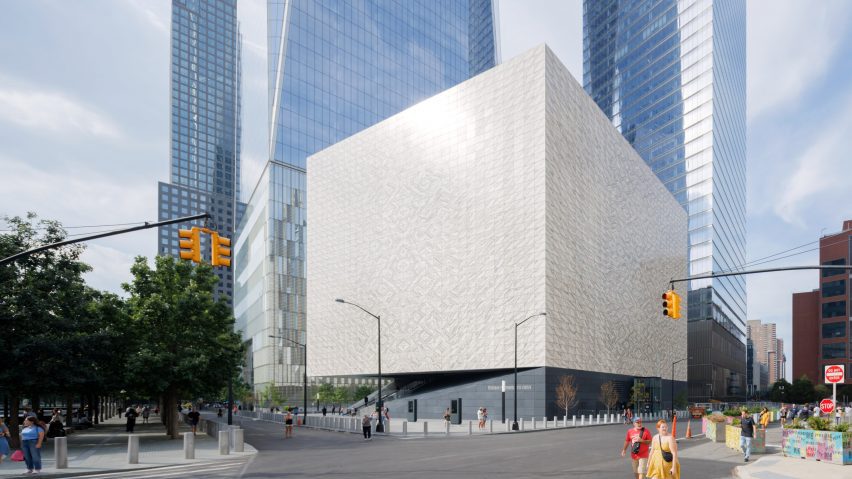
Rex clads "mystery box" World Trade Center performance arts center in translucent marble
Architecture studio Rex has revealed the translucent-marble-clad Perelman Performing Arts Center at New York's World Trade Center site.
Located alongside One World Trade Center in downtown Manhattan, the Perelman Performing Arts Center by Rex comprises a cubic structure with thin marble cladding. Davis Brody Bond served as the executive architect on the project.
The thin stone allows for light to pass through, creating ambient light inside during the day and a glowing effect at night. Natural patterns in the stone were arranged to create a relatively symmetrical pattern across the facade.
The marble was sandwiched between glass panels, which help shelter the interior from noise. The translucent material was also chosen for its ability to let light in while masking the activity within the building.

"It was made pretty explicit to us that you shouldn't see any kind of commercial activity from the memorial," Rex founding principal Joshua Ramus told Dezeen.
"The idea of coming up with translucent marble was that it was pure, elegant, respectful of the site right next door, but then would have the ability to assert itself at night when it was operational."
The need to respect the adjacent memorial to the destroyed World Trade Center buildings was not the only challenge of the site.
It sits on top of four storeys of city infrastructure, including subway systems and an access ramp for a port authority building. Due to this, the primary spaces of the Perelman had to be lifted 21 feet (6.4 metres) above street level, marked on the outside by a black plinth below the marble structure.
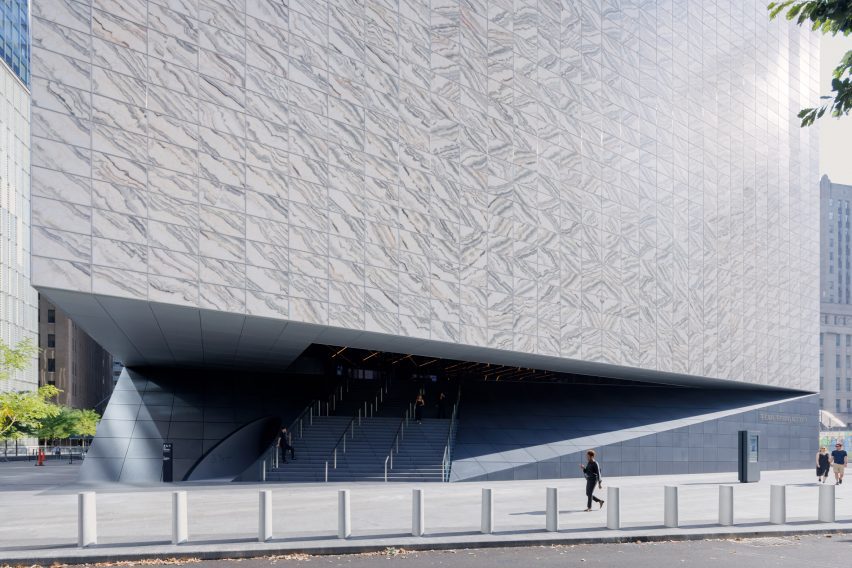
On top of that, the architecture studio had to deal with the existing foundation leftover from the cancelled Frank Gehry building initially planned for the site.
"All the below-grade infrastructure was built based on Frank Gehry's design," said Ramus.
"So we had to come back in and retrofit or reverse engineer the structure and find any place that we could thread the structure down through what was built. His building was twice the size of ours."
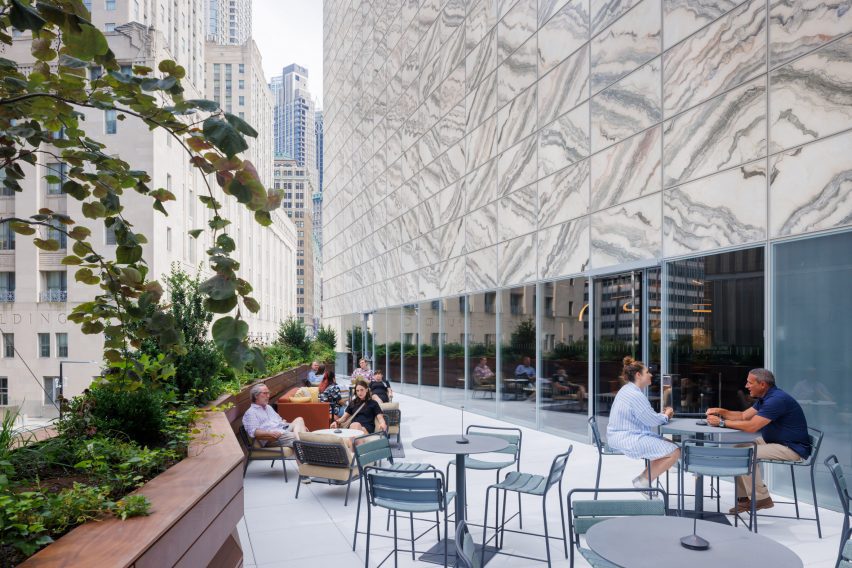
The studio found the seven load-bearing columns left by Gehry's project and "played a game of twister" to support the new building. This constraint led to the dramatic cantilevered entrance to the structure, which Ramus said many people mistakenly thought was a design "conceit", adding that if they were to have a cantilever, it might as well be dramatic.
In addition to the structural complications, the site also led to challenges in the program for the performance areas, an aspect that Ramus said was central to the conception of the building in general.
"Everyone talks about the facade, but the thing that is super interesting is the reconfigurable auditoria," he said.
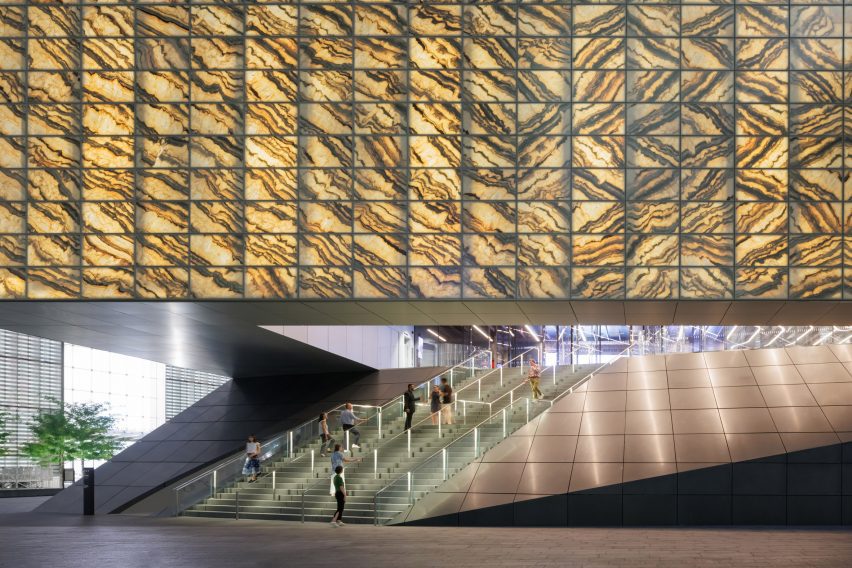
The space contains three theatres of different sizes laid out in a cruciform pattern, with circulation areas on the perimeter.
A combination of four massive guillotine walls that open the theatres up to the circulation and to each other, demountable balconies and reconfigurable floors and seating allows for sixty-two different configurations for the performances.
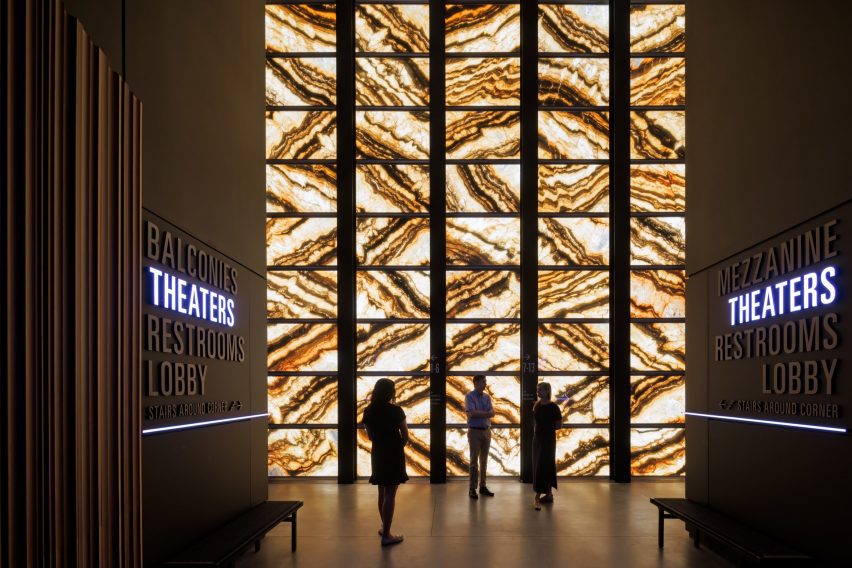
Because of the lack of below-ground space, the team stacked the program, putting the lobby on the bottom floor, back-of-stage facilities on the second and the performance spaces themselves on the top floor.
The method recalls the stacking Ramus employed for the Wyly Theater in Dallas, and Ramus noted that the Perelman was an iteration of ideas used in that design.
In order to have the systems necessary to lower and raise the floors, Rex included a series of tubes that contain toothed stainless steel strips that coil and uncoil, allowing for the floor to be operable.
This option was taken because standard hydraulic lifts would have required the building to be raised another two floors, according to Ramus.
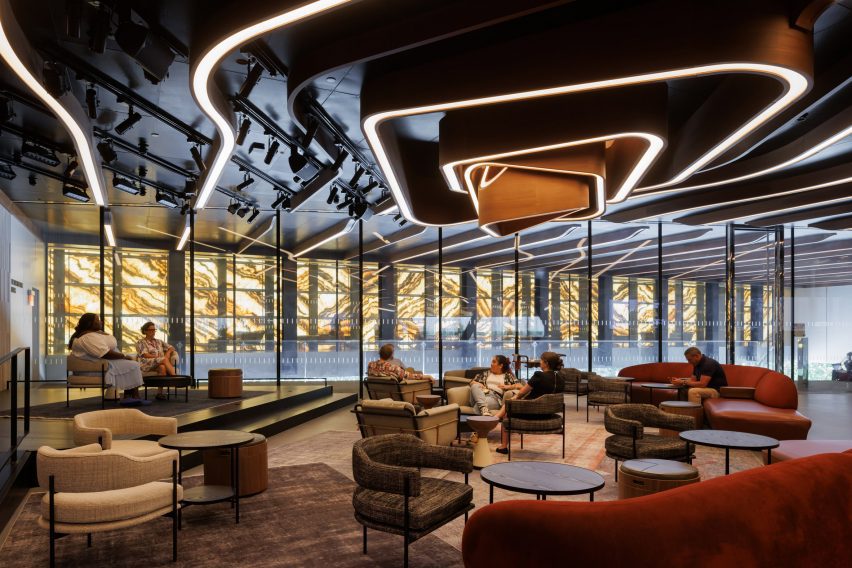
The glass on the exterior helps with insulating the performance spaces from the bustle of lower Manhattan. The spaces were left relatively unmoored from the steel and marble envelope.
"The auditoria are box in the box construction," said Ramus. "They literally aren't tied to the rest of the building," he continued.
"They're isolated from the building and vibration of the building and they're isolated from each other – so you can do simultaneous performances."
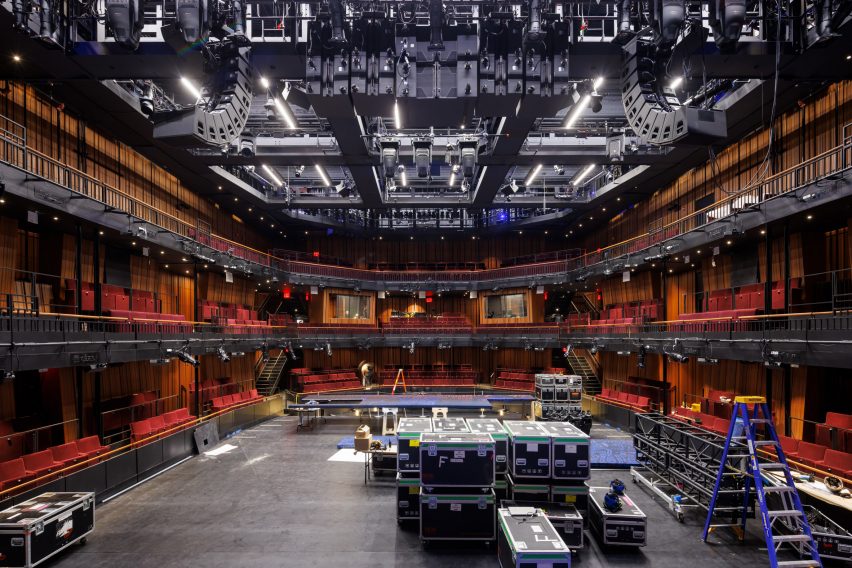
Rex consulted with a series of creative directors in the planning of the different configurations that led the team to aimed for spaces that allowed for a "suspension of disbelief".
Ramus contends that this focus on performance was the guiding principle of the design and those reviewing the early designs "didn't once talk about how the building would operate", focusing instead on how "iconic" the design would be.
"I will say, if you're building a stone glowing cube in the middle of Manhattan, it's hard to argue that that's not iconic, but it's also not really the point," said Ramus.
Because of the reconfigurable nature of the interior and the concealing effect of the marble, Ramus said that the structure is meant to provoke a sense of mystery.
"The concealment created the notion of a mystery box, so that over time, as people use the building, instead of it revealing itself to you, the more mysterious it will become."
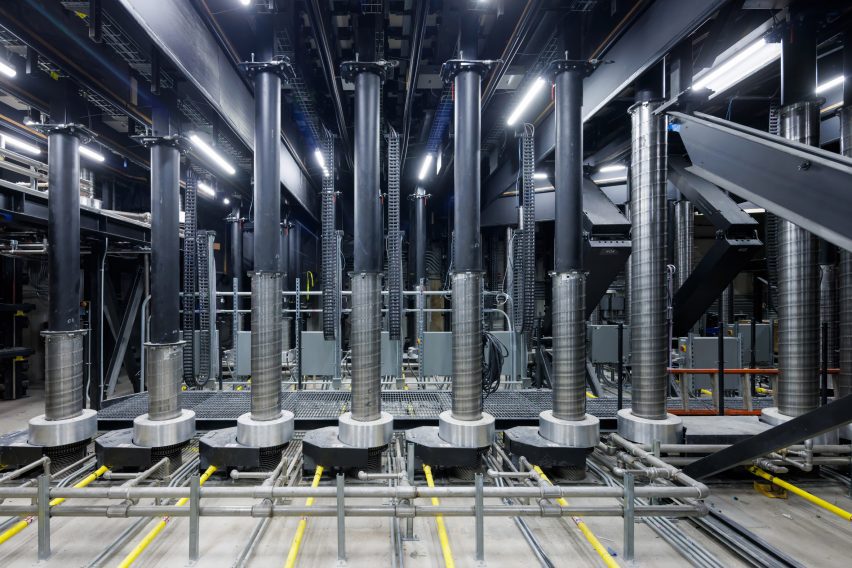
New York-based studio Rockwell Group carried out the interior design of the lobby and restaurant areas.
The Perelman is one of the last buildings in architect Daniel Libeskind's 2003 masterplan for the World Trade Center site.
Nearby, Spanish architect Santiago Calatrava recently completed a church that also features thin stone cladding that lights up at night.
Ramus was a founding partner of OMA's New York office and bought out OMA founder Rem Koolhaas's shares in the branch, rebranding the studio as Rex in 2006. Other notable projects under Ramus' direction include the Seattle Public Library.
The photography is by Iwan Baan.
Project credits:
Design architect: Rex
Executive architect: Davis Brody Bond
Theatre consultant: Charcoalblue
Acoustician: Threshold Acoustics
Restaurant and lobby interior architect: Rockwell Group
Structural engineer: MKA
Structural consulting engineer: Silman
Donor recognition and signage designer: Entro
Facade consultant: Front
Lighting design consultants: Tillotson
Project manager (design and preconstruction): DBI Projects